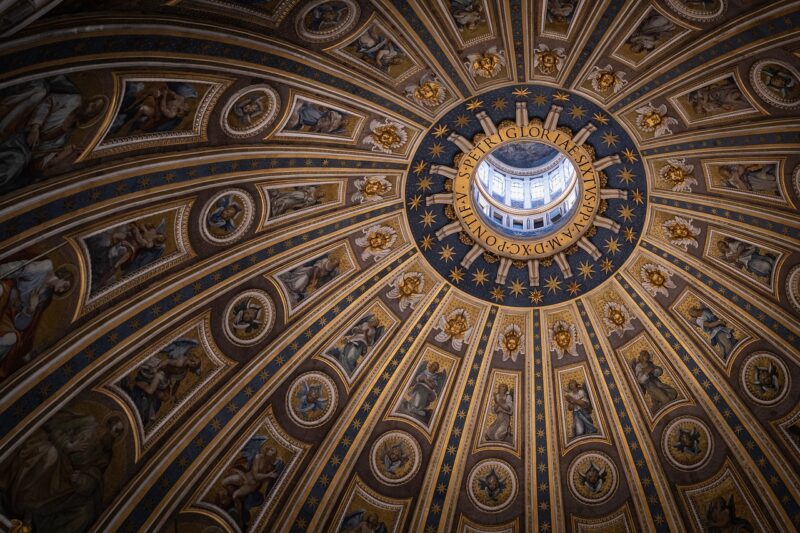
The Vatican is often perceived as an institution steeped in sanctity and moral authority, yet its historical entanglements with the mafia have sparked intrigue and controversy. The intricate web of connections between the Vatican and organized crime spans centuries, raising questions about the church’s influence and operations behind closed doors. This exploration aims to uncover the layers of this relationship, delving into notable figures, events, and the implications on both the church and society.
1. Understanding Organized Crime:
Before delving into the Vatican’s connections with organized crime, it’s vital to define what we mean by the mafia. Originating in Sicily, the term ‘mafia’ refers to organized crime syndicates involved in a variety of illegal activities, including extortion, racketeering, drug trafficking, and money laundering. They operate with a code of omertà, or silence, protecting their activities from law enforcement and outsiders. The mafia extends beyond Italy and has global ramifications, often seeking corrupt alliances with powerful institutions.
2. Early Encounters: The Sicilian Mafia and the Vatican
The first significant connections between the Vatican and the mafia can be traced back to Sicily during the late 19th and early 20th centuries. As the mafia began to grow in power, the Catholic Church found itself at a crossroads in Sicilian society, where church influence was both powerful and pervasive. In some instances, mafia leaders sought the church’s support to legitimize their businesses and gain protection against rival factions.
Notably, figures such as Salvatore Giuliano, a notorious bandit and leader of a separatist movement, often had ties to local clergymen. The church, hoping to maintain its influence in the region, at times turned a blind eye to the criminal activities, forging a twisted partnership.
3. The Vatican Bank Scandal
One of the most infamous incidents linking the Vatican with mafia figures emerged from the Vatican Bank scandal of the 1980s. The scandal centered around the involvement of the Vatican Bank’s president, Paul Marcinkus, in money laundering through organized crime syndicates.
The most notorious mafia figure associated with this scandal was Roberto Calvi, a banker dubbed the ‘Banco Ambrosiano’ scandal king. Calvi was connected to the P2 Masonic Lodge, which served as a haven for corruption in Italy, including ties to organized crime. After Calvi’s mysterious death in 1982, hanging under Blackfriars Bridge in London, investigations revealed the deep ties between his banking empire and the Vatican Bank, as well as the mafia.
This scandal revealed a lack of oversight within the Catholic Church’s financial operations, raising questions about potential complicity or ignorance regarding the dealings with organized crime.
4. The Influence of the Mafia on Vatican Policies
The Vatican’s dealings with mafia figures have not only been confined to financial avenues. Organized crime has historically influenced various church policies and political affiliations. Some reports suggest that the mafia has leveraged its influence to sway decisions within the church, particularly when it comes to protecting their operations in Italy and beyond.
For instance, during the 1950s and 1960s, many church leaders were accused of having reluctant relationships with local mafia bosses to safeguard church interests while turning a blind eye to the mafia’s brutal activities. This connection became particularly evident during the rise of Francesco “the Beast” Di Carlo and his influence over certain clerics.
5. The Ongoing Impact: Modern Connections
While many connections may have remained buried in history, recent events have shown that the Vatican’s entanglement with organized crime is not completely resolved. In Italy, the mafia continues to exert a significant influence on both the legal and illegal economy, often intertwining with legitimate businesses, including churches.
Contemporary investigations into money laundering and racketeering still highlight remnants of these connections, illustrating that the church, while striving for reform, still faces challenges in purging itself of historical ties to organized crime.
Efforts, such as the establishment of strict financial regulations for the Vatican Bank and transparency initiatives, aim to sever these connections, signaling a desire for accountability and morality even amid difficult historical legacies.
6. The Vatican’s Stance on Crime and Justice
One of the most intricate paradoxes is the Vatican’s official stance on crime and justice versus the operations and actions taken historically. The Vatican has consistently promoted peace, forgiveness, and social justice — ideals that seem at odds with the realities of its historical connections to organized crime.
Yet, the church recognized the importance of addressing these issues through a lens of reform and reconciliation, hoping to lead societal transformation rather than contributing to continued corruption. This has encouraged some attempts to confront the past and embark on a path different from that which characterized previous relations with the mafia.
Conclusion: A Complex Relationship
The Vatican’s connections with mafia figures unravel a complex narrative that intertwines crime, power, and faith. While the church continues to position itself as a moral authority, its historical entanglements raise profound questions about accountability, influence, and integrity. The repercussions of these connections echo throughout society and contribute to a broader understanding of organized crime’s relationship with societal institutions. Moving forward, the Vatican must navigate these historical legacies with care, seeking not only to distance itself from past misdeeds but also to promote a vision of justice and integrity aligned with its core values and purpose.
As we continue to study these connections, it’s essential to recognize that understanding history is vital for ensuring a safer, more just future for all layers of society.






